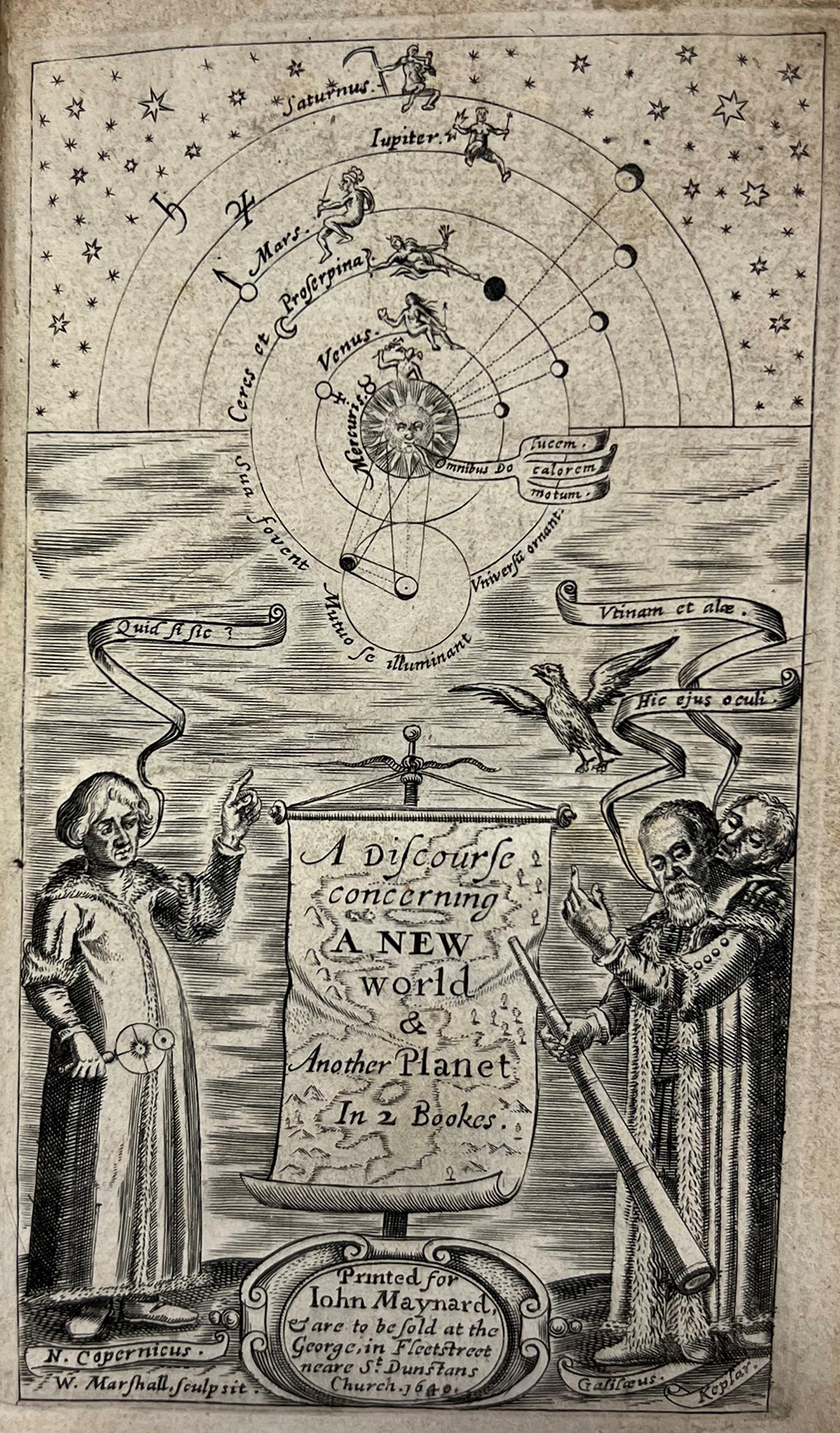
John Wilkins (1614-1672) was a theologian, bishop, and natural philosopher who was active in the political, religious and scientific life of England in the mid-17th century.
John Wilkins had an interesting and varied life and career: he was a private chaplain to the nobility, holder of the prestigious roles of Warden of Wadham College, Oxford and of Master of Trinity College, Cambridge, husband of Robina, the youngest sister of Oliver Cromwell the Lord Protector of the Commonwealth, and adviser to Richard Cromwell; he was also an active member of the scientific communities in London and Oxford, and Bishop of Chester.
Wilkins published widely on religious, philosophical and scientific subjects. His 1668 ‘Essay towards a real character and a philosophical language’ was a complex attempt at creating a universal language and system for sharing all knowledge, begun with the help of Seth Ward, Bishop of Exeter (1662-1667).
However, with the Museum of the Moon currently at the Cathedral, we turn to one of his earliest works:
‘The Discovery of a New World, or, a discourse tending to prove, that ‘tis probable there may be another habitable World in the Moone’ was first published in 1638, the year he was ordained.
In this book, Wilkins sets out 14 ‘Propositions’ in which he defines the character of the Moon, explains how and why he believes the Moon to be inhabited, and describes possible methods by which humans might one day reach the Moon.
This book, and its companion work ‘A Discourse Concerning a New Planet’ (1640) were popular and influential books, which defended the theories about the nature of the Earth and solar system put forward by the likes of Johannes Kepler and Galileo. He uses observation, scripture, and the writings of ancient and modern scholars as evidence in support of his theories.
Wilkins takes pains to encourage the reader to keep an open mind to his theories, explaining that many seemingly ridiculous ideas may one day be proven accurate, and that many nonsensical ideas can be widely accepted – despite evidence to the contrary:
“you may as soone perswade some country peasants that the moone is made of greene Cheese (as wee say) as that ‘tis bigger than his Cart-wheele, since both seeme equally to contradict his sight”.
In his final Proposition, Wilkins states “That tis possible for some of our posterity to finde out a conveyance to this other world, and if there be inhabitants there, to have commerce with them”. He considers the problems of gravity, the coldness and thinness of the air, and also the practicalities of managing drinking water, food, luggage and rest. After all there would be “No inns to entertaine passengers, nor any castles in the ayre (unlesse they bee inchanted ones) to receive poore pilgrims or errant knights”.
As to the actual means of travel, Wilkins recognises that humans are not as well adapted to flying as birds, so that even if a person could fly, they would be too slow and quick to tire to enable them to make the trip unaided. With this in mind, a vehicle is suggested, perhaps a type of a flying chariot in which a man may sit, together with food and other necessities, maybe modelled in the shape of a bird.
Wilkins may not have got all his ideas right, but he was not wrong in declaring that:
“nothwithstanding all these seeming impossibilities, tis likely enough, that there may be a meanes invented of journeying to the Moone; And how happy shall they be, that are first successful in this attempt”.
It took 331 years but, in 1969, he was proved correct. Humans did land on the lunar surface and, who knows, perhaps in time the ‘Selenite’ inhabitants of the moon will be discovered too.